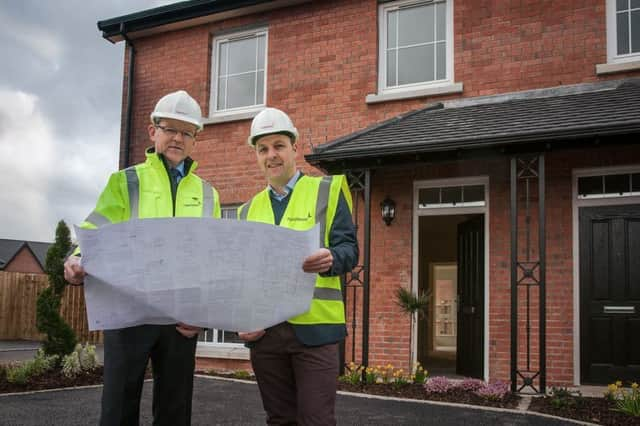FastHouse has new approach to home building


That’s the claim from Limavady firm FastHouse which has taken on 30 new staff as it ramps up production after the completion of the first two semi-detached homes in Windrush Park, Antrim.
The build was reduced from 16 weeks to just three, and the firm says its modular offsite timber system not only brings the benefit of speed; as buildings are largely constructed in a controlled factory environment, the process facilitates improved health & safety standards, reduced waste and better quality.
Advertisement
Hide AdAdvertisement
Hide AdAgainst the projected need for up to 190,000 new homes in the province from 2008 to 2025, a recent industry report highlighted that 50% of the construction sector reported a shortage of skilled labour.
“Traditional construction methods have changed very little over the decades due to the conservative nature of the industry,” said FastHouse MD Stephen Bell.
“Even the use of traditional timber frame construction in NI only accounts for 15% of new build homes compared to 33% in England and 75% in Scotland.
“We are delighted to complete our first project for Lagan Homes which has resulted in a fully completed house within three weeks of moving on site. We strongly believe that off-site manufacturing isn’t the future of the housebuilding industry, it’s the today.”
Advertisement
Hide AdAdvertisement
Hide AdFastHouse’s signature closed panel timber frames leave the factory insulated with service conduits and electrical boxes installed, windows pre-fitted and dry lined, ensuring minimal waste and maximum efficiency.
Lagan Homes MD Conor Mulligan said: “For the builder, in this climate of limited bank lending, the ability to increase turnover of ‘work in progress capital’ from three times a year to perhaps ten times a year will have substantial appeal.”